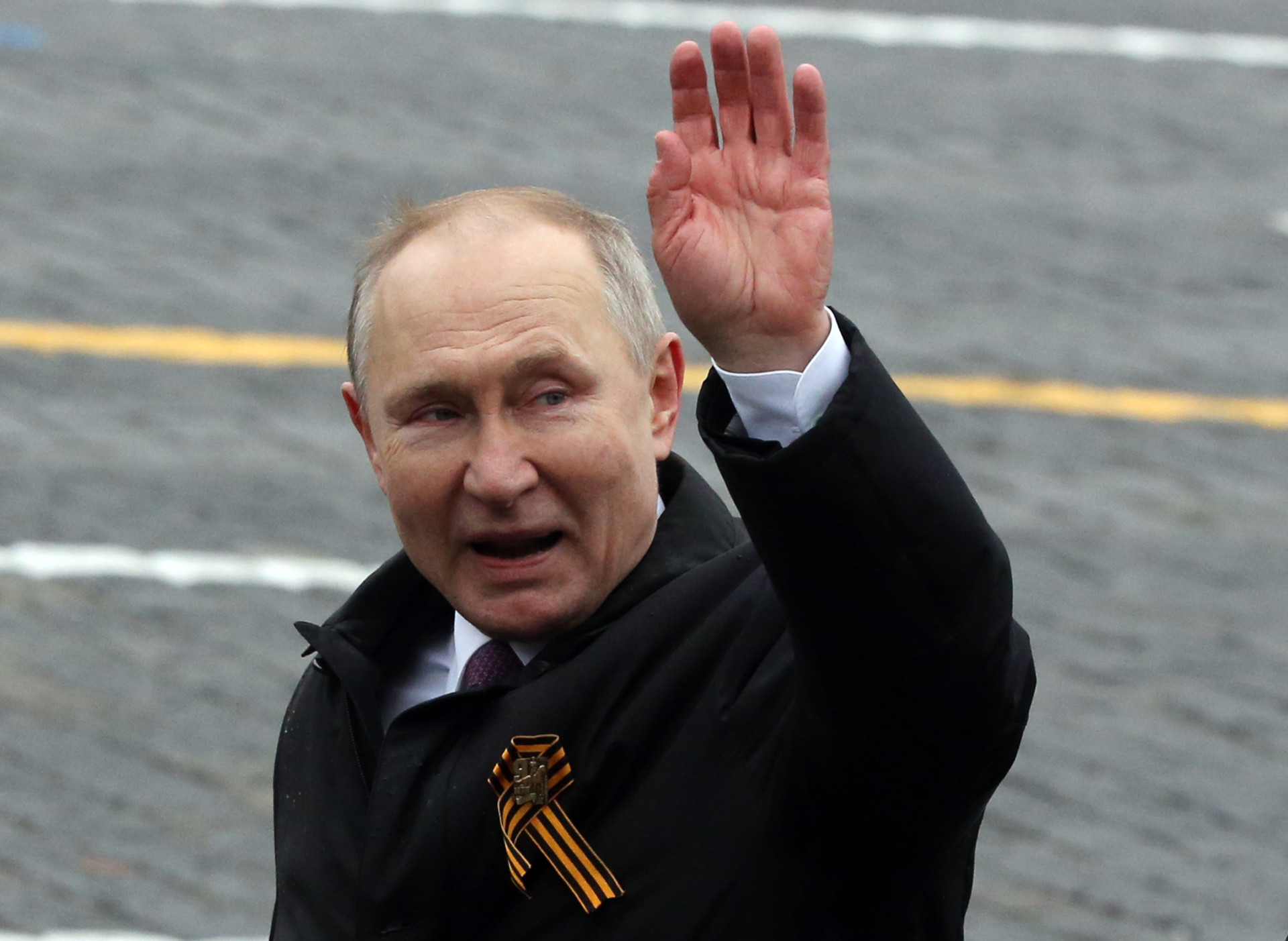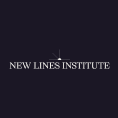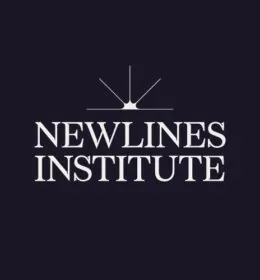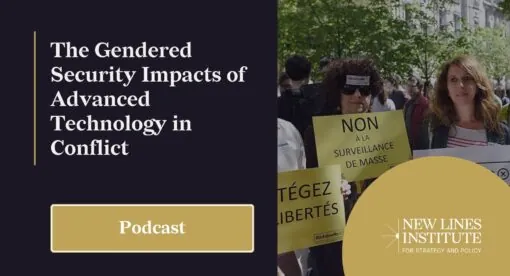Recent constitutional reforms in Russia have been widely portrayed as a consolidation of President Vladimir Putin’s personal power, but an analysis of the measures shows a country preparing for an eventual end to Putin’s rule — as well as looming economic, demographic, and sociopolitical crises.
Introduction
With a July 2020 referendum, the Russian government adopted a new constitution that adjusted the relations between different bodies of government, codified several popular welfare measures, and extended President Vladimir Putin’s eligibility to remain in office until 2036. A common interpretation is that these reforms are a way for Putin to extend his personal power, but Russia’s motivations are not necessarily totalitarian; in fact, this new constitution is the blueprint for a post-Putin era.
Russia will soon face a generational shift in leadership and a series of major economic, demographic, and sociopolitical challenges. The new constitution aims to prepare the country for a more collective leadership that will preserve the power of the current elite — the political, industrial, and security powerbrokers that Putin’s rule represents — while maintaining a balance between their competing interests so no one group or individual becomes dominant. It is uncertain if Russia’s constitutional reforms will be successful in the long term, but these reforms illustrate the intent of Russian leadership to be adaptive in how it shapes governance in the face of an uncertain future.
One critical challenge is the fact that Putin will eventually step down or be unable to continue governing. The new constitution aims to anticipate this by establishing a new political culture based on collective decision-making. Putin is pushing for this objective alongside a broader power elite that rules through him and seeks to remain in control beyond him. The Russian rulers draw heavily on Russia’s history in stipulating this future course, but this is not simply a return to Czarist or Soviet models of authoritarianism. Modern Russia presents new challenges, on top of old ones that have led to repeated failure in reform attempts.
Today’s Russia is not simply the totalitarian dictatorship that many contemporary analyses tend to present it as. Instead, Putin, as a head of state, fulfills the role of a coordinator or arbiter between Russia’s powerful factions and interest groups that make up its elite. That elite itself also doesn’t simply rule through blunt authoritarianism but has instead established a more nuanced, tightly controlled system of “managed democracy” that plays an important role in establishing legitimacy for the elite. This system effectively shares the trappings of both democracy and dictatorship. But as with any political system, its nature is forced to adapt to changes in its external environment and domestic requirements.
With Putin’s rule credited for Russia’s post-Soviet resurgence over the past two decades, the end of this rule only brings additional uncertainty. Russia’s political elites fear a diminishment of centralized power through internal competition and/or the emergence of weak leaders. This in turn would lead to ineffective policymaking and a return to a new period of troubles as witnessed during the 1990s or, in an even more extreme scenario, a violent upheaval akin to 1917. Each of these would mean an uncertain political climate in Russia where power is up for grabs and where current leaders may be unable to protect their wealth or power. The elite certainly does not want a repeat of the 1990s decade when the Russian state was mired in uncertainty until Putin emerged from within the establishment and was able steer Moscow back to great power status. The ongoing efforts to avoid such turmoil may not actually survive Putin’s rule itself, but the goal is to establish a self-reinforcing political structure or culture capable of balancing the competing factions within Russia’s elite and slow down any potential new reformers. If these measures succeed, they could provide an opportunity for the U.S. to halt its drift toward a personality-driven Russia policy and return to one based on institutions.
The Nature of Russia’s Managed Democracy
Russia’s politics and public policy are shaped by the current political elite, which has developed around and through Putin himself but is not limited to him. This includes many different factions that emerged from the collapse of Soviet institutions and now make up the upper echelons of the Russian Federation’s political, economic, and security spheres. Putin himself, being a former member of the KGB and head of the FSB under former President Boris Yeltsin, draws attention to the prominent role of the so-called Siloviki — the high-ranking security officials that wield political power — in Russian government. Apart from them, however, a large financial and economic elite also wields tremendous power, consisting of leaders of major state-owned enterprises within Russia’s state structures and of the many powerful oligarchs outside of it. In addition to these hard-power factions, separate factions have also emerged from the post-Soviet formalization of interests into political party structures. These political factions, with the ruling United Russia party as its main center of gravity but also extending to local power players, overlap with the hard-power elite in many ways but also generate their own policy preferences. As much as Putin today is considered a singular authoritarian leader, the foundation of his rule rests on his ability to manage the tenuous relations between these various factions and interests.
The legitimacy of the current Russian system through which this elite rule rests on being able to effectively claim to represent the will of the Russian people and act in the best interest of the state. Though a heavily managed democracy, electoral dynamics and popular sentiment remain a major concern to the elite. Major outcries of public anger have caused significant shifts in government policy, and though the deck is stacked in favor of United Russia in elections, opposition parties are able to compete and win in local, regional, and national contests. United Russia and the elites who inhabit it have developed a network of political patronage and have been willing to selectively use repressive tactics against opponents. Through this combination of populist democratic and authoritarian strategies, the current elite has been able to maintain a popular mandate and buy-in across Russian society and can claim to represent a political consensus on Russia’s future path. If the elite is to maintain this power, it must contend with and adapt to renewed pushes for greater political liberalization and internal jockeying for power.

As for Putin himself, the role that he has carved out as the central coordinator between the various stakeholders, including both the elites and the Russian people, also holds a challenge of its own. The thought of simply replacing Putin with another powerful figure could be a recipe for all-out competition between Russia’s political factions, similar to that of the early post-Soviet era. The Russian elite believe that to avoid such competition, the next president of Russia can’t be as powerful as Putin and that a rigorous system will have to be put in place once he leaves office to guarantee the centralization of power while maintaining the balance within the policy elite.
Preparing for a Russian Winter
The future of the Russian Federation, which its current political elite is seeking to safeguard, is riddled with hurdles. A combination of demographic overturn and external political influences are chipping away at the electoral strength that United Russia, which underwrites the political power of the elite, currently offers. Increasing demands for political liberalization among younger generations — as evidenced by recent protests in Khabarovsk and popular outcry over the treatment of political activist Alexei Navalny — have already pushed the Kremlin to expand its instruments to manage this through controlled opposition, intimidation, and, increasingly reluctantly, outright repression.
Russia’s demographic problems reach much further than the generational overturn, however. The country’s natural population growth rate, which hovers between stagnation and decline, causes concern for the long-term sustainability of the Russian labor force and even government revenues. Population projections by both the U.N. and Russia’s own federal statistics service Rosstat converge on an overall population decline of up to 10 percent over the next 15 years, from around 146 million currently to only 134 million in 2036. Between low fertility rates and emigration of young and talented Russians, the country is seeing a decline particularly in highly educated workers that can drive innovation. A smaller workforce also means restrictions on military recruitment and government revenue through personal income taxes.
These challenges are set to become even worse, with a new demographic crunch expected to hit the country between 2035 and 2040. Russia has previously experienced waves of population decline, where historical crises such as World War II or the economic crisis of the 1990s led to a decrease in birth rates and in turn led to a reduced volume of births from the resulting “small generation.” Various crises over decades have coincided with and amplified the effects of these smaller generations. Russia recently faced the prospect of a declining total workforce as a result of these demographic crunches, causing the government to take far-reaching and widely unpopular measures to raise the retirement age in 2018, only to back off after countrywide protests. But when the next crunch hits, Russia’s government will be forced to enact even less-popular measures. On top of that, this very time frame aligns with a number of economic and political trends — related to the decline of global oil consumption and Russia’s own oil production, as well as the tentative end of Putin’s rule in 2036 — that could lead to a tumultuous time in Russia.

Russia faces significant challenges in remedying the flaws in its economic fiber. Through a series of back-to-back economic crises in the past decade, economic growth is stagnating, which in turn is negatively affecting political stability and imposing severe constraints on the sustainment of military and diplomatic power. The country’s dependence on extractive industries, primarily hydrocarbons, for its government budgets and as the general engine of its economy also imposes urgent requirements for reform. Russian oil production is likely to decline over the next decades as aging fields starve off while natural gas markets become increasingly competitive through the rise of liquefied natural gas and global shifts in the use of energy resources. For Russia’s elite to wield power, an effective economy is needed to underpin its capabilities.
Russia’s domestic stability is also under increasing external pressure. Operating in a global environment among powers greater than itself in capabilities, such as the United States and China, Russia finds it difficult to maintain its own external agency. Conducting an effective foreign policy in the face of pressure tactics like sanctions regimes, which themselves add to Russia’s domestic concerns, requires a level of resilience that Moscow has not yet achieved. In order to put its foot down against what the Kremlin perceives as continued strategic encroachment by NATO, and to maintain overall external agency, Russia has headed down a path of shielding its economy and politics from external dependencies but still has quite a way to go.

The Specter of Russian Reform
Russia’s leaders are no strangers to exercising radical reform to remedy national ills. The majority of the senior figures in the current Russian leadership, including Putin himself, lived through and have been shaped by the experiences of Russia’s transition from the Soviet Union to the Russian Federation. Since the formal end of the Soviet Union, Russia rapidly devolved from a burgeoning democracy to a strongly managed and restricted democracy due to Yeltsin’s imposition of the 1993 constitution, which affirmed Russia’s highly centralized super-presidential system.
Though Yeltsin consolidated the formal powers of his office, he was too weak and ill to establish a new political consensus. Additionally, Yeltsin’s cronies used their close relationship with the president to loot the country. This lack of consensus left Yeltsin’s administration hobbled and Russia in a state of chaotic political factionalism for several years. The Duma elections of 1993 also birthed a Russian legislature beset by infighting among dozens of political factions that gradually coalesced into parties.
It was only after Putin’s ascension to the presidency and the merger between the center-right political parties Unity and Fatherland into United Russia that a new dominant political consensus was established. Putin also utilized Yeltsin’s constitution to reassert the dominance of the state and position himself as final arbiter between Russia’s power players. Putin is likely also cognizant that Yeltsin’s mental and physical degradation in his later years left him easily exploited by shortsighted opportunists and is aware that a future power struggle could turn violent, as it did during the Constitutional Crisis of 1993, or would at the very least seriously disrupt Russia’s national ambitions. Nevertheless, the Kremlin knows Putin cannot remain in power indefinitely and that he needs to leave Russia with a framework for stable governance.
Putin is not following any exact blueprints or guidelines for this, nor indeed is it assured that his plans will succeed. He is certainly learning from the experience of past Russian efforts under both the Soviet and late Czarist periods to instill reforms. Putin is following Mikhail Gorbachev’s example to create buy-in to the government system by the current elite that will allow it to remain in power and keep the state functional in the long term. Gorbachev’s reforms failed to save the USSR from political collapse because his efforts created openings for nationalists to enhance their own power while pulling the Soviet Union apart.
It also is unlikely that Putin is trying to make an exact copy of any foreign models of governance, but there certainly are echoes of China’s successful political reform in his approach. China, like Russia, had to navigate a transition from a command economy to one that could compete on the global stage. However, unlike the USSR, which tried to change everything at once, Chinese leader Deng Xiaoping chose a gradual approach, including a slow opening of special economic zones and a series of revisions to the constitution that imposed a collective approach to leadership. Deng formally stepped down as leader of China in 1989 but remained a key figure in the background managing the country’s transition. Though recent events have altered Deng’s original design, from a macro perspective it was still a success as it left the nation stable and able to grow stronger.
Putin is likely hoping that his own reforms will similarly leave Russia in a position where it can strengthen itself without being vulnerable to the capriciousness of one individual or a small circle of opportunists. As China’s neighbor and fellow inheritor to the difficulties of navigating a communist legacy, many in Russia’s political and academic circles advocate looking to China for examples of governance and economic management given Beijing’s positive experience of gradual transition toward a free-market system that has shown highly impressive and sustained growth.
A New Constitution for a Post-Putin Era
While the recent constitutional reforms introduced by the Russian government in July 2020 have been widely portrayed as a consolidation of Putin’s personal power, the combination of adjustments actually tells a different story. The overall intent displayed by Putin and the elite that surrounds him appears to be to shift Russia’s political culture away from one dependent on the authority of a single arbiter to one based on a collective decision-making process. Even though the president does gain some powers under the new constitution, other amendments clearly distribute some authority away from the presidency to the Duma and the Federation Council.

These adjustments mean that the Duma, to a much greater degree than before, will dominate cabinet positions related to domestic economic affairs. The Federation Council, which is composed of delegates of the Russian Federation’s 85 federal subjects, is also granted additional powers as a check on presidential appointments and as a way to guarantee regional buy-in in Moscow’s centralized decision making. This effectively achieves a division of responsibility for managing Russia that forces different branches of government to collaborate to formulate policies, as each branch will still be dependent on cooperation or resources provided by other branches of government. Such a system likely will prevent a single faction from dominating all aspects of policy.
The extension of Putin’s viability to run for office has been interpreted by most as an authoritarian mechanism to guarantee his personal rule, though considering the emphasis on collective decision making this is more likely to be informed by the utility of a figure like Putin to manage Russia’s transition. With an emphasis on structure rather than agency, the new constitution also restricts future presidents by limiting them to two terms. Under such conditions, future presidents will be less capable of dominating an “era” of Russian politics in the same way Putin has.
The constitutional amendments also unveil a wider effort to shape the people that make up the political apparatus as a whole. Requirements to hold public office in Russia have been significantly tightened, for example by disqualifying those who have held foreign residency or lived abroad for extended periods. These measures are likely aimed at impeding efforts by exiled opposition leaders or foreign-based oligarchs to take office.
A Glimpse of Russia’s Future
Russia’s plan will not necessarily be successful. The new political machinery could become extremely vulnerable once Putin himself has left the political stage, and new rulers might well try to overturn it to return to a more centralized, authoritarian system. Despite these efforts to establish a new, future-proof political culture in Russia, the country’s experiences with past attempts at similar reform paint a bleak picture of its potential success.
It is too early to tell exactly how well the new constitution will be able meet its goals, but the historical examples show that any succession in Russia can rapidly devolve into a power struggle. From the perspective of the current reform ambitions, in a best-case scenario such competition could lead to a gridlock in governance, with separate factions dominating separate branches of government and denying each other the resources they require to execute policy. In the worst case, a powerful actor or faction could gain control over the different branches of government and overturn the constitution as it currently stands.
A major impediment to the shift in culture will also be the shrinking budget and resources that the Russian elite have access to amid continued economic, technological, and demographic stagnation. Under these conditions, scarcity will likely escalate internal competition for power rather than lead to collective accountability. This is one of the reasons Putin himself will likely take an active role in managing this transition. The extension of his ability to run for office could allow him to stay in power for what is expected to be a tumultuous and critical era for Russia. Eventually, however, Putin will have to step aside, and that moment could still come sooner than 2036 depending on his personal health. Having to manage a succession in addition to the various systemic challenges Russia already faces would be certain to stress the viability of successful reform as currently intended.
From a U.S. perspective, Russian challenges and reforms raise important questions on the direction of its Russia strategy. Under a reformed Russian political system, current policies may not remain valid. If effectively implemented, a Russian political culture stressing institutional power rather than personality-driven politics would generate an opportunity for U.S. diplomacy to expand connections across regions and levels of politics. On the other hand, a failure to consolidate Russian governance could generate a complex political environment rife with both risk and opportunities.
Jeff Hawn is an independent geopolitical risk consultant and a tactical analysis expert. Previously, Hawn worked for four years as an open-source analyst with the private intelligence firm, Stratfor where he specialized in domestic extremism and civil unrest. He is also a Ph.D. candidate at the London School of Economics in international history centered on the Russian constitutional crisis of 1993 and the emergence of the post-Cold War world order. He tweets at @jeff_hawn.
Sim Tack is a geopolitical and military analyst at Force Analysis. His activities are centered around intelligence-driven approaches to the study of armed conflicts and military capabilities, as well as other resources of power that support foreign policy behavior. He tweets at @SimTack
The views expressed in this article are those of the author and not an official policy or position of the Newlines Institute.







